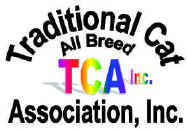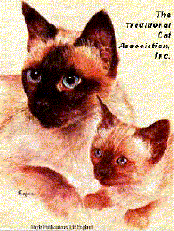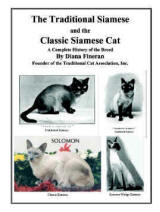|
Minimal progress has been made, but there is new
information. FIP is still a mutant form of a highly contagious virus called the
benign feline enteric corona virus (FECV). It spreads readily, rapidly and
rampantly in multi-cat households and especially at cat shows. Most cats with
FECV don’t get ill or display signs. The
virus does mutate into FIP.
What is new is it has been discovered one of the ways FIP
can be passed from cat to cat is through the litter box.
Weekly cleaning of litter boxes is a recommended habit.
FECV can be killed by regular disinfectant, though some carrier cats do
continue to shed the virus. An FIP infected cat may shed virus intermittently in
all body fluids and feces. The
problem is that one can’t know when unless you test by PCR.
It used to be believed that it took two corona viruses to
combine and mutate and make an FIP strain.
Now, it is known that one strain of virus can mutate on itself and make
an FIP virus. Over crowding, cat shows, breeding of cats, contact with strays,
going outside, etc. are contributing factors.
One researcher recommends not removing an FIP infected cat
from the cattery. Siteing that the
other cats have already been exposed. Isolating
a sick cat is hard on the cat, stresses the immune system, changes the social
structure of the cattery and stresses the other cats as well.
Another authority states that, “Removing a KNOWN FIP cat
would be of value to those remaining, since there would at least be reduced
exposure to additional virus. Even
a healthy cat’s system can be over come!” Another possible way to reduce FIP
is to try to identify the chronic carriers of FECV and remove them from the
cattery.
There is a battery of percentages given concerning how many
cats in catteries actually have FECV and/or FIP. It all depends upon who is doing the reporting. What I found
was: “One out of 20 kittens could develop FIP.” “It was previously
proposed that 90% of all catteries in the Country had corona virus in their
group of cats.” “The Winn Foundation recently published an article stating
that nearly 100% of catteries already have FECV Corona virus.”
“It was proposed that because of the high incidence of corona virus in
catteries, any cattery had a 5 – 6% chance of having an FIP kitten.” “FECV
is nearly unavoidable in multiple-cat environments and FIP is a consequence of
high levels of FECV.”
Dr. Cahill has patented in the U.S. an FIP ELLSA similar to
that spoken of at the recent Glasgow, Scotland conference.
It was developed to his PCR primers and is, therefore, just about as
specific as his PCR test. It, however, detects specific antibodies to FIP virus in
serum making it a better test for whole blood (since whole blood commonly has
only about a 5% chance of containing circulating FIP virus). This puts Dr.
Cahill ahead of UC Davis. He exerts, “Note, though, that NO test will be 100%
correct (accurate). Even if there
were, over 98 – 99% of the Veterinarians in this country wouldn’t know how
to interpret the results!”
I am eternally grateful to Dr. Cahill for his help in
providing invaluable knowledge about this disease.
Dr. Allen Cahill
DyNAgenics Vet. Diagnostics
PO Box 39079
Denver, CO 80239
303-576-6800
Fax: 303-307-1995
|

 The
Traditional Cat Association,
Inc.©1987®TM
Official Website
The
Traditional Cat Association,
Inc.©1987®TM
Official Website